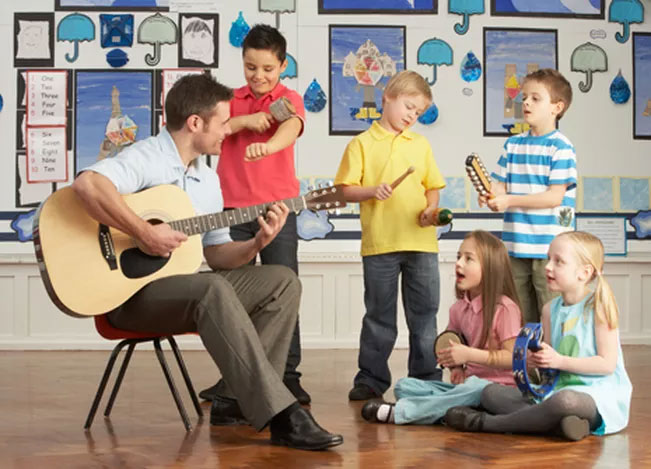
by Maurizio Vespa | Jan 2, 2018 | Education
The end of year school holidays cannot come quick enough for some teachers. However, as soon as the festive season is over, the “Back to School” items appear on department shelves and the mixed feelings, thoughts and emotions begin to surface. From my own experience, it was thoughts of “where did the time go”? Really, is it that time again?
Yes, I knew very well, the work that was ahead of me but I also knew that how I begin the year with my students, inevitably sets up how and what the new year would feel, look and sound like for the students and myself.
So, as the teacher, “What am I responsible for at the start of this school year”?
1. Establish a classroom learning agreement
Firstly, in collaboration with your students you need to establish a classroom learning agreement. Create a list of classroom expectations, no more than seven to ten, that are practical, realistic and that each person is able to commit too and manage. Type these up and hand them out at the start of our next lesson. Discuss with them, if we need to add or make changes to our agreed list. You inform the class that we will review our agreement mid way through the school term and at the start of each subsequent term.
2. Set up a “Fear Free” learning environment and celebrate mistakes
To create a learning environment that is safe to make mistakes, is important, so it is helpful to share your thoughts about “fear” and “failure” with students. Fear, does nothing to assist learning and it does not contribute to positive learning relationships. Therefore, if any student enters your class and is in anyway fearful or scared, then we are responsible for working with that student to explore ways of dispelling that feeling.
If students make mistakes or fail at first attempts, it means they have made an effort, they have “had a go” and confronted the challenge. Hence, we still take away learnings from the experience. Our role is to provide extra opportunities and support for the student to re-attempt the setbacks again until they feel confident. Fear is debilitating and failure makes people feel shameful, neither is healthy in the classroom.
3. Be mindful of the language and tone
The tonality of your voice and the language you use with students is critical in setting up the learning space. A calming, confident and assertive tone contributes to positive feelings, safety, security and a respectful interactive atmosphere. A great practice is to greet the students when they come into class, and when they leave at the end of a lesson. Statements like, “ good morning”, “welcome everyone”, and as you end the lesson, “enjoy the rest of your day” are uplifting. These positive and respectful comments, contribute to positive learning relationships.
Language that is aggressive, sarcastic, disrespectful and impacts on the dignity of a person is damaging to the creation of a positive classroom climate. Therefore, when you need to get the students attention, use a respectful tone and refuse to shout instructions over people. If and when, you require the attention of students, wait patiently, until it is given to you, and thank them for respectfully working with me. The behaviour you model is the behaviour you would like your class to reflect.
4. Be predictable with your moods
In my 30 plus years working in education, I have experienced more and more students with signs of mental health and trauma related issues. Anxiety is at the very top of my list.
This point follows on from number 3 and for students with anxiety, being predictable in our moods helps students to remain and feel settled. It is perfectly OK, for you to feel annoyed, upset, frustrated with situations that may arise during the lesson etc. It is also OK for you to communicate that you are not happy with the level of noise, or the distractions etc, etc, etc. However, it is not Ok, to take it out our hurt and place it onto students because it will make me feel better or it allows me to assert my authority and regain power and control.
How we express my emotions, and the manner in which we do it, teaches and models to our students how it is respectfully carried out. If our daily mood is unpredictable, it can heighten anxiety levels and effect a student’s ability to engage socially and in the learning process.
5. Transparent and clear student management process
Talking with students about your expectations and classroom management style is helpful because it places them at ease. Being clear (transparent) and consistent with students contributes to a calmer space and helps build learning relationships and engagement. It is always helpful remind students of our agreed classroom expectations. Then if necessary explore ways to manage situations by using de-escalating intervention strategies such as redirecting students back to their work or onto a different task. At the completion of the lesson, you may ask a student, time permitting, to have a conversation with you about what was happening during the lesson but if it is not possible, ask them to catch up with you during a break in the day.
It is helpful to constantly remind yourself, that whenever you take the time to correct a student’s behaviour, it empowers you. It also holds the student/s accountable and allows them to be engaged in a conversation with you.
When you engage in a conversation with students to explain their inappropriate actions or behaviours, you are implementing a natural consequence. This conversation, however, needs to focus on exploring respectful and appropriate actions and behaviours. Hence, you are teaching and modelling what is acceptable behaviour, you are also contributing to building resilience by topping up emotional and self-regulatory skills.




Recent Comments